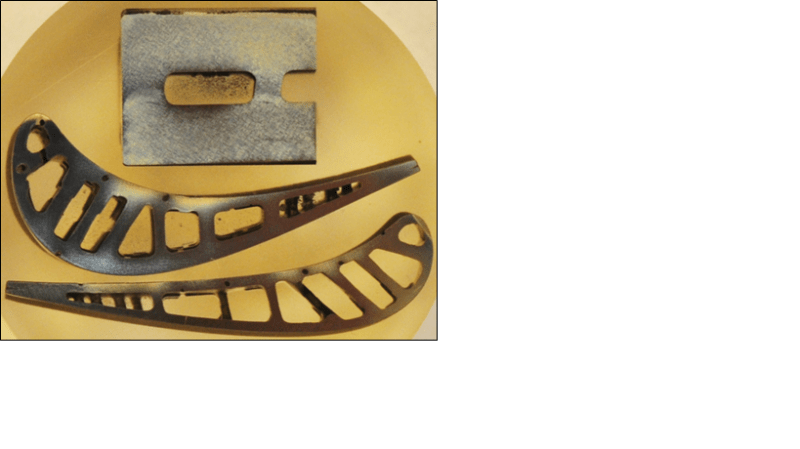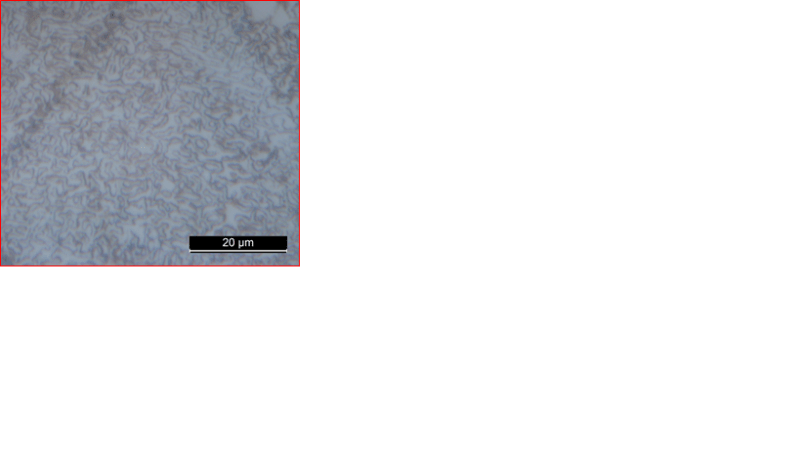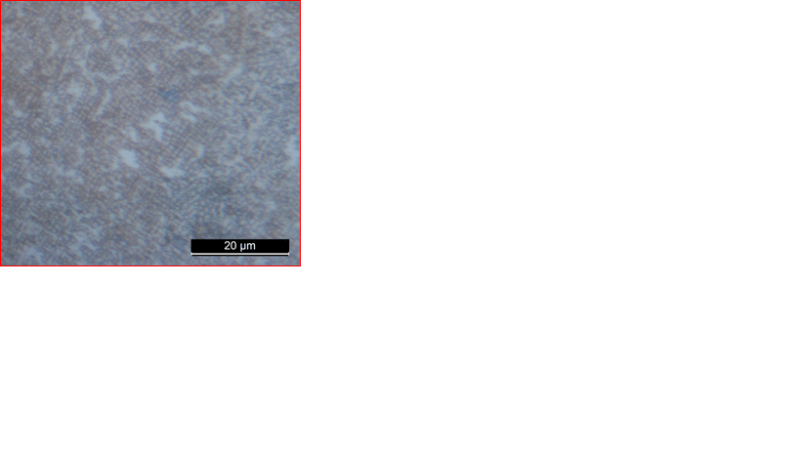Dear engineers,
This is my first post and i am new to this very interesting forum.
Please excuse me if i did skip the introduction part, i'll try to introduce myself in the appropriate section if this is necessary!
Well, this is my metallurgical finding/question:
As i work in the aviation industry (but quite new to the materials they use) i had to cut out a High Pressure Turbine (HPT) blade for analysis. I did it to learn more about the material (RENE N5) and get more in depth knowledge.
The specimen was cut with water cooling, polished and finally swap etched with Kallings 2 reagent for 5 seconds:

close up:

my question is as following: why are some regions darkened by the etchant? They quickly appeared during etching. My own hypothesis is a phase change, caused by local overheating of this particular area (like grinding burns when you etch with Nital).
In order to answer my question and develop above mentionned hypothesis i tried to look into the available literature but i couldn't find anything that clearly answers my question.
But... There are gamma and gamma prime phases.. So i examined the microstructure at high magnification and i found out that the darkened regions do show a coalescence and coarsening of the gamma prime matrix (please correct me if i am wrong). I also examined the microstructure of a section which was cetainly NOT overheated (dovetail) and i observed a cubical matrix of gamma prime (please correct me if i am wrong).
Well, are the above mentioned observations the cause of darkened regions after etching? And if yes, what is exactly happening to cause some regions to be ''more'' susceptible for kalling 2?
High-mag picture of darkened microstructure:

High-mag picture of certainly non overheated microstructure (cool area such as the dovetail):

Thank you very much for your time!
Best regards,
Kim
This is my first post and i am new to this very interesting forum.
Please excuse me if i did skip the introduction part, i'll try to introduce myself in the appropriate section if this is necessary!
Well, this is my metallurgical finding/question:
As i work in the aviation industry (but quite new to the materials they use) i had to cut out a High Pressure Turbine (HPT) blade for analysis. I did it to learn more about the material (RENE N5) and get more in depth knowledge.
The specimen was cut with water cooling, polished and finally swap etched with Kallings 2 reagent for 5 seconds:

close up:

my question is as following: why are some regions darkened by the etchant? They quickly appeared during etching. My own hypothesis is a phase change, caused by local overheating of this particular area (like grinding burns when you etch with Nital).
In order to answer my question and develop above mentionned hypothesis i tried to look into the available literature but i couldn't find anything that clearly answers my question.
But... There are gamma and gamma prime phases.. So i examined the microstructure at high magnification and i found out that the darkened regions do show a coalescence and coarsening of the gamma prime matrix (please correct me if i am wrong). I also examined the microstructure of a section which was cetainly NOT overheated (dovetail) and i observed a cubical matrix of gamma prime (please correct me if i am wrong).
Well, are the above mentioned observations the cause of darkened regions after etching? And if yes, what is exactly happening to cause some regions to be ''more'' susceptible for kalling 2?
High-mag picture of darkened microstructure:

High-mag picture of certainly non overheated microstructure (cool area such as the dovetail):

Thank you very much for your time!
Best regards,
Kim
